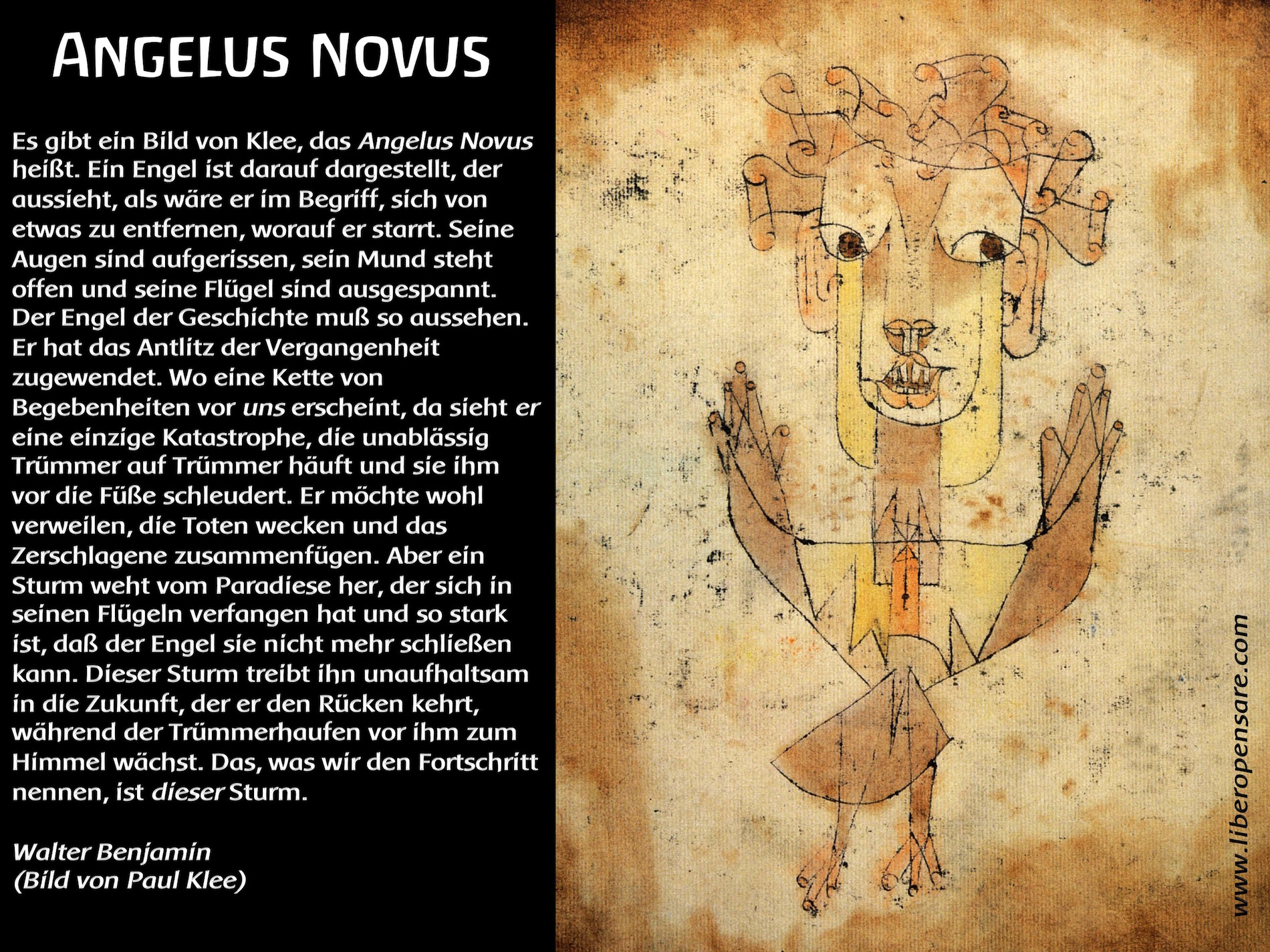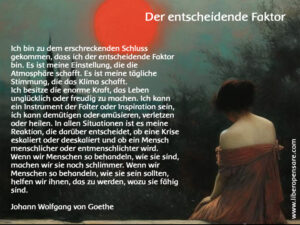
__________________________________________________________
C’è un quadro di Klee che s’intitola Angelus Novus. Vi si trova un angelo che sembra in atto di allontanarsi da qualcosa su cui fissa lo sguardo. Ha gli occhi spalancati, la bocca aperta, le ali distese. L’angelo della storia deve avere questo aspetto. Ha il viso rivolto al passato. Dove ci appare una catena di eventi, egli vede una sola catastrofe, che accumula senza tregua rovine su rovine e le rovescia ai suoi piedi. Egli vorrebbe ben trattenersi, destare i morti e ricomporre l’infranto. Ma una tempesta spira dal paradiso, che si è impigliata nelle sue ali, ed è così forte che egli non può chiuderle. Questa tempesta lo spinge irresistibilmente nel futuro, a cui volge le spalle, mentre il cumulo delle rovine sale davanti a lui al cielo. Ciò che chiamiamo il progresso, è questa tempesta.
Walter Benjamin
* * *
Es gibt ein Bild von Klee, das Angelus Novus heißt. Ein Engel ist darauf dargestellt, der aussieht, als wäre er im Begriff, sich von etwas zu entfernen, worauf er starrt. Seine Augen sind aufgerissen, sein Mund steht offen und seine Flügel sind ausgespannt. Der Engel der Geschichte muß so aussehen. Er hat das Antlitz der Vergangenheit zugewendet. Wo eine Kette von Begebenheiten vor uns erscheint, da sieht er eine einzige Katastrophe, die unablässig Trümmer auf Trümmer häuft und sie ihm vor die Füße schleudert. Er möchte wohl verweilen, die Toten wecken und das Zerschlagene zusammenfügen. Aber ein Sturm weht vom Paradiese her, der sich in seinen Flügeln verfangen hat und so stark ist, daß der Engel sie nicht mehr schließen kann. Dieser Sturm treibt ihn unaufhaltsam in die Zukunft, der er den Rücken kehrt, während der Trümmerhaufen vor ihm zum Himmel wächst. Das, was wir den Fortschritt nennen, ist dieser Sturm.
Walter Benjamin
* * *
There is a painting by Klee called Angelus Novus. It shows an angel who seems about to move away from something he stares at. His eyes are wide, his mouth is open, his wings are spread. This is how the angel of history must look. His face is turned toward the past. Where a chain of events appears before us, he sees on single catastrophe, which keeps piling wreckage upon wreckage and hurls it at his feet. The angel would like to stay, awaken the dead, and make whole what has been smashed. But a storm is blowing from Paradise and has got caught in his wings; it is so strong that the angel can no longer close them. This storm drives him irresistibly into the future to which his back is turned, while the pile of debris before him grows toward the sky. What we call progress is this storm.
Walter Benjamin



